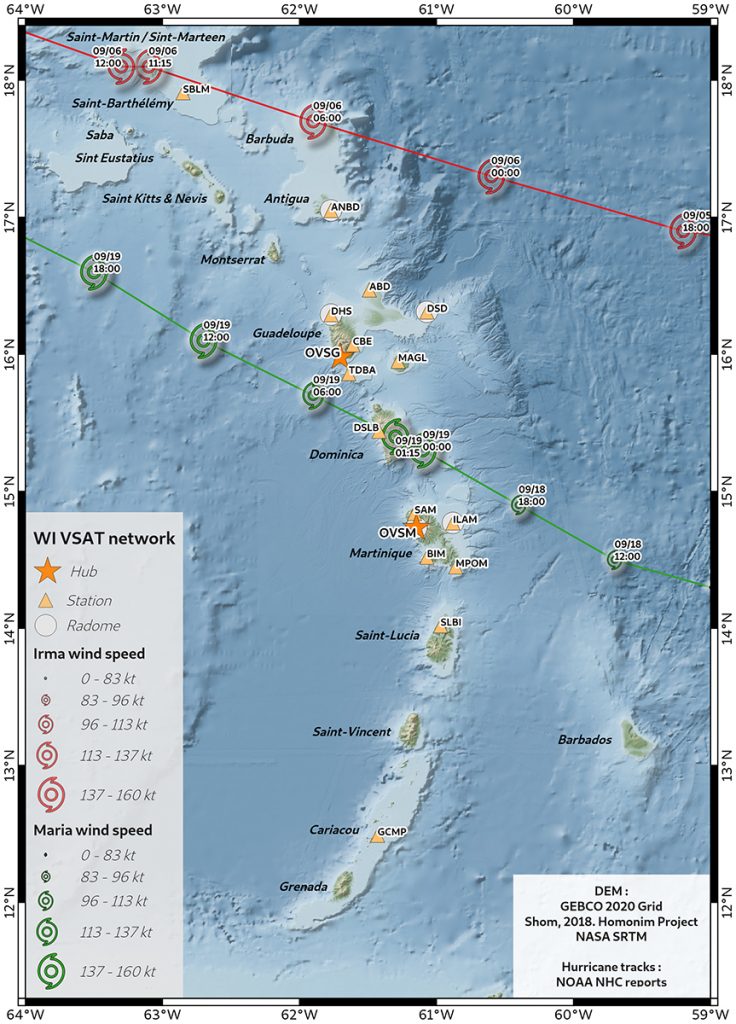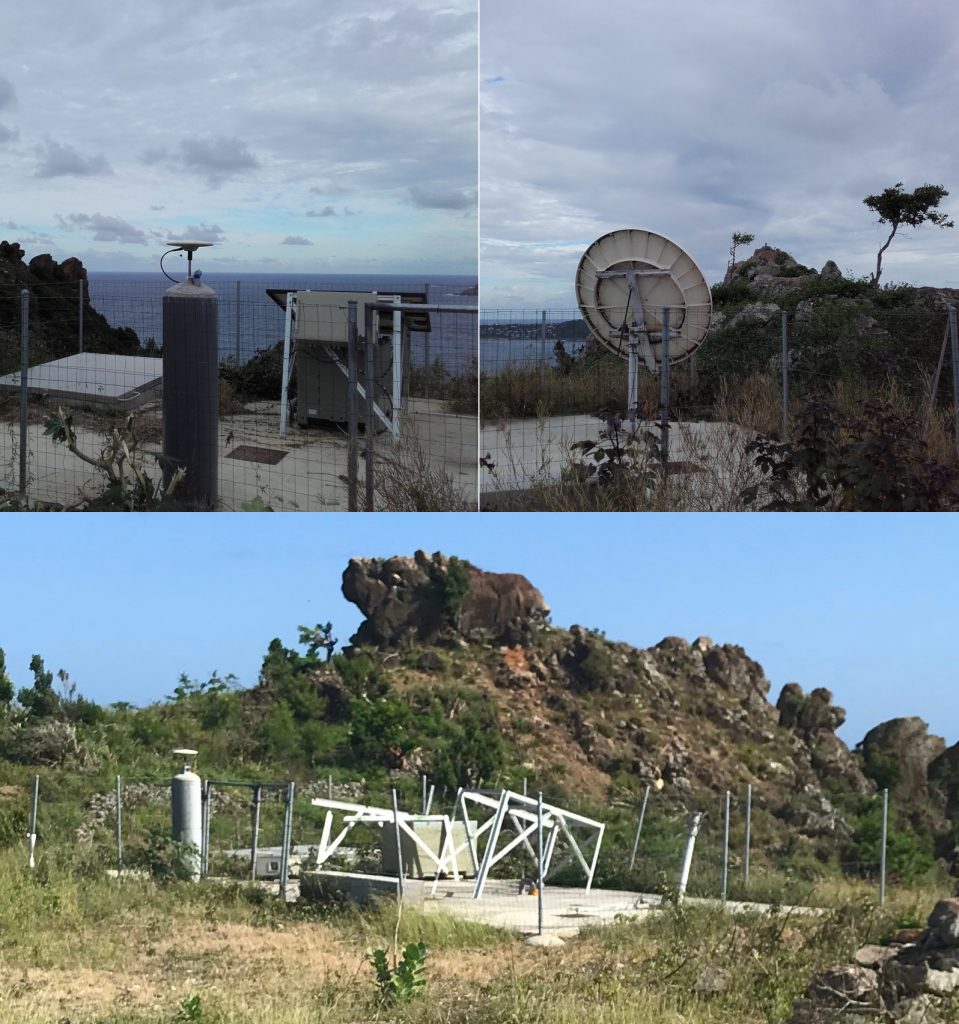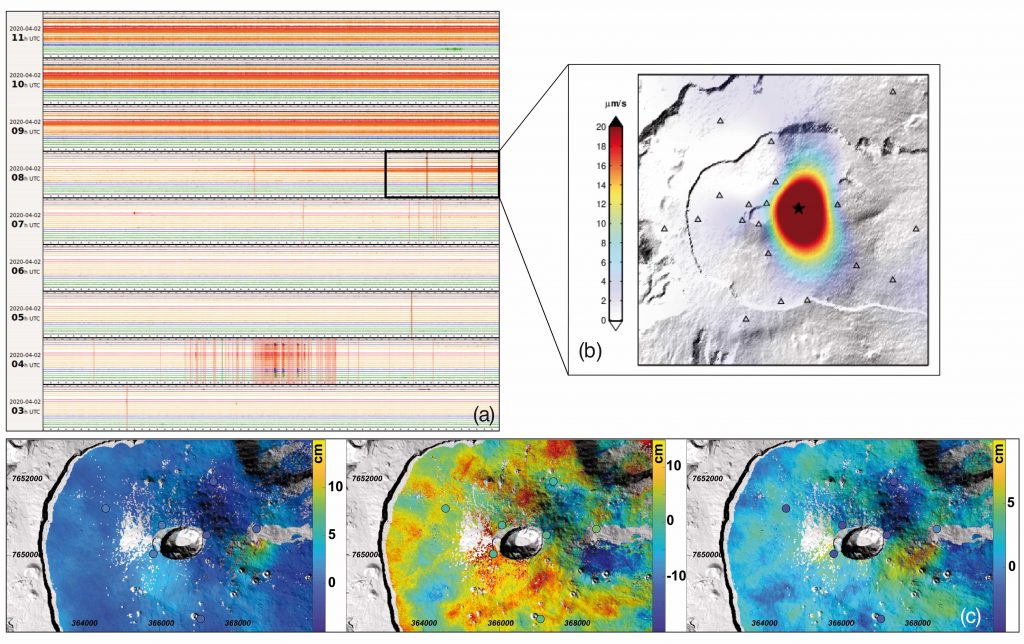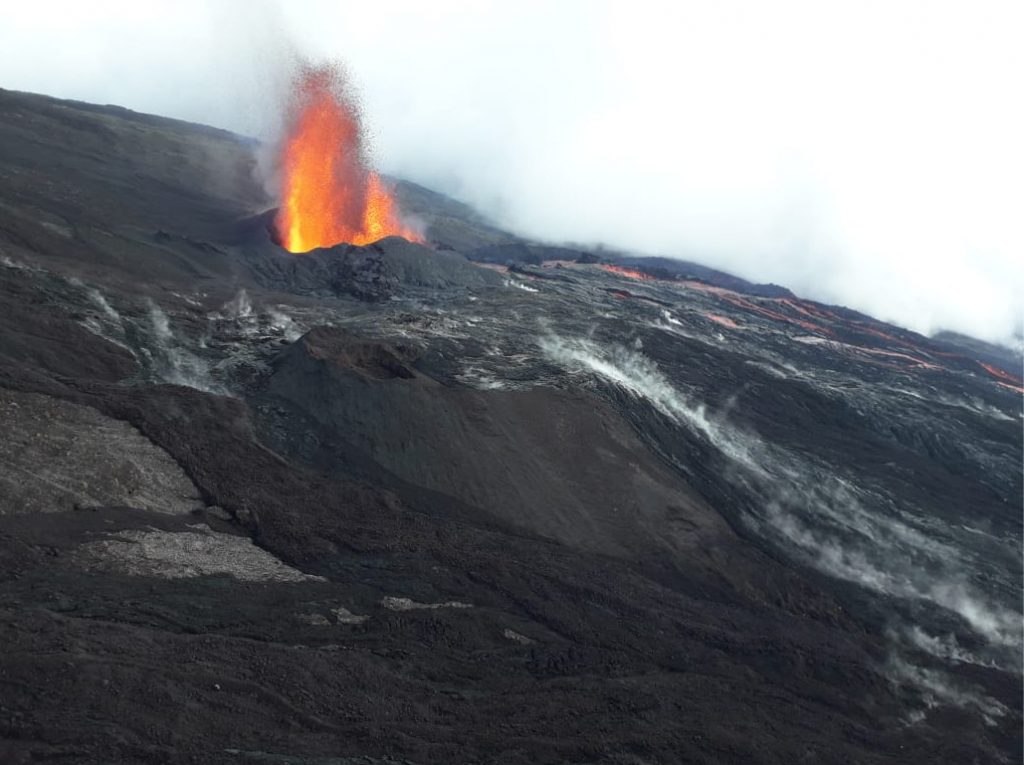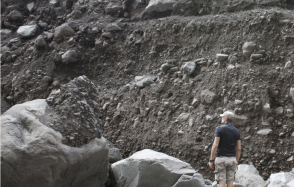Surveillance in times of crisis
Two scientific publications have just appeared in Seismological Research Letters, confirming the ability of IPGP's observatories to deal with the major crises of recent years, whether climatic, with the devastating passage of hurricanes Irma and Maria in the West Indies, or health-related, with the management of an eruption at Piton de la Fournaise on Reunion Island during a period of confinement.
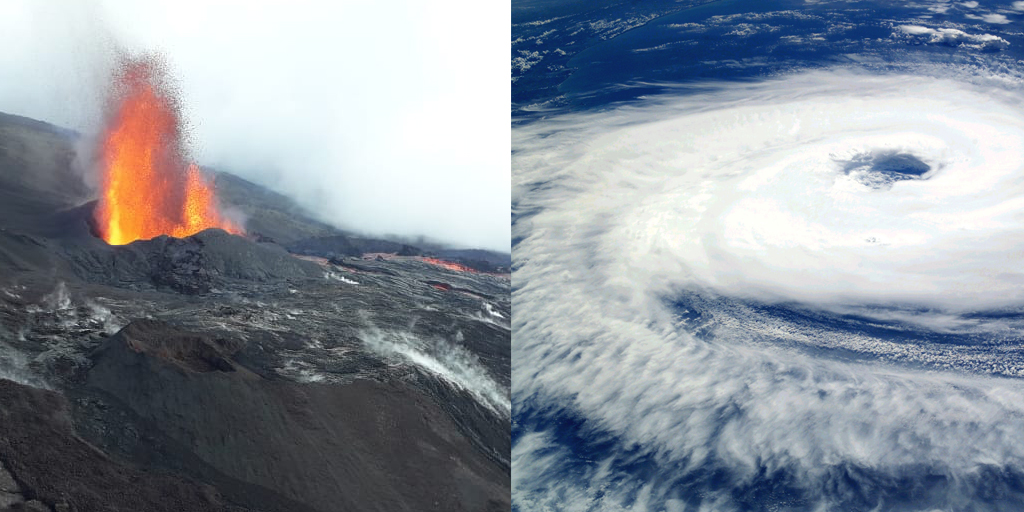
Publication date: 10/12/2020
Observatories, Press, Research
Related observatories : Volcanological and Seismological Observatory of Guadeloupe (OVSG-IPGP), Volcanological and Seismological Observatory of Martinique (OVSM-IPGP), Volcanological Observatory of Piton de la Fournaise (OVPF-IPGP), Volcanological and Seismological Monitoring Network of Mayotte (REVOSIMA), IPGP Data Centre
Related themes : Natural Hazards





